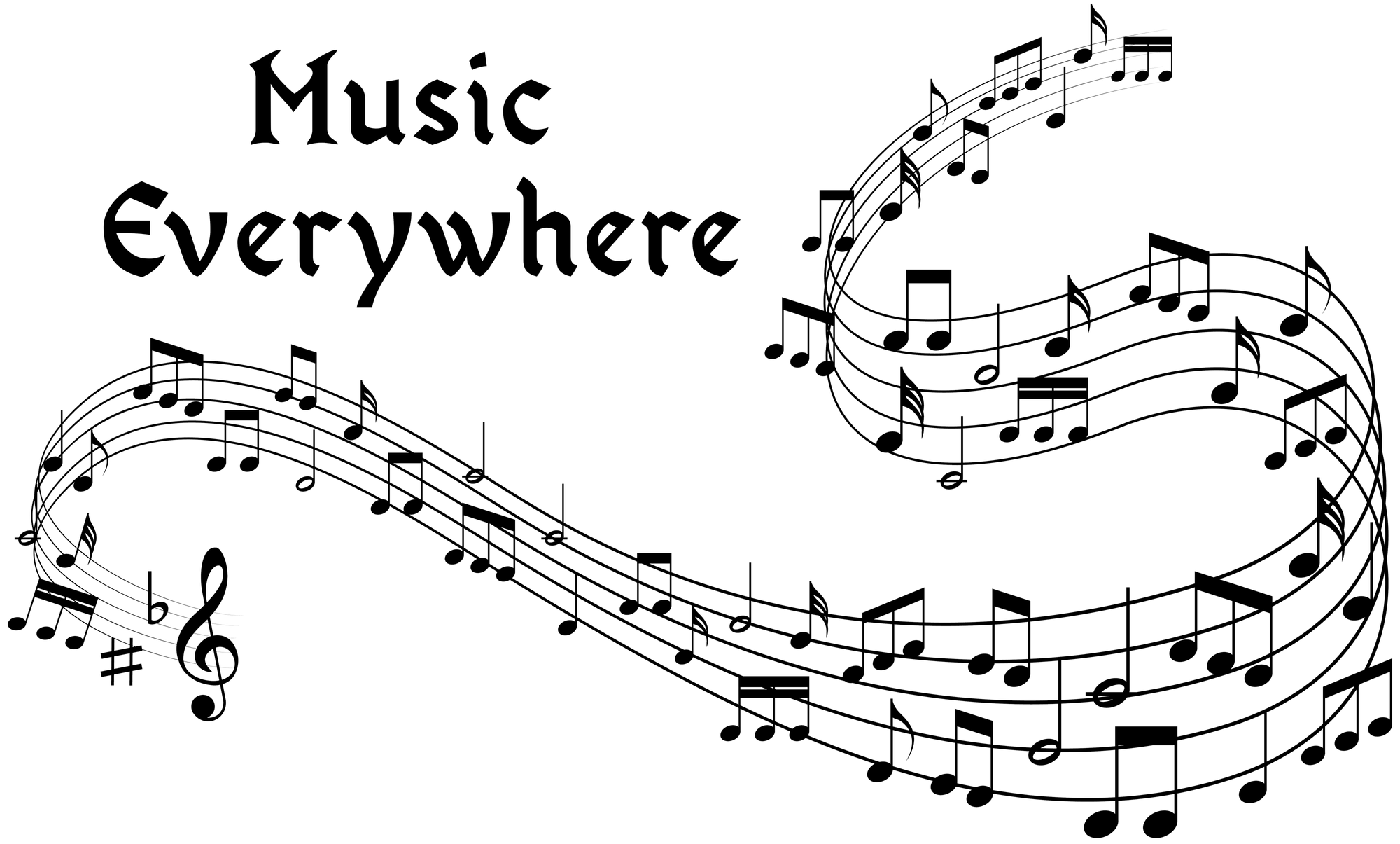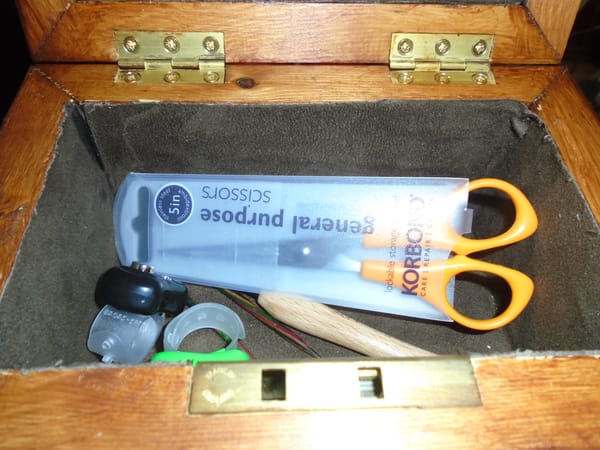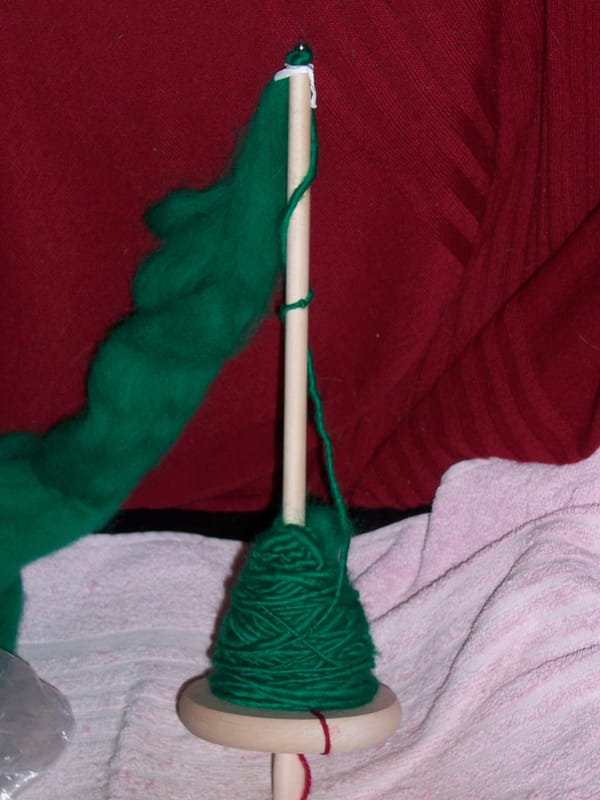Game, set, and matching decor

Let me start by saying that you don't actually need fancy props to do roleplaying. It's perfectly possible to do it online without anything like that, just so long as you have a little bit of software to roll dice for you (and a lot of places do). It is, however, a lot of fun, especially if you make at least some of them yourself.
So this is Lianthorn the half-elven bard; the unfeasibly large gem that fastens his cloak is, in fact, a minor magical item that allows him to be extra helpful to his companions in a fight. (Bards are, in any case, which is why I really like playing them. Generally they're not great fighters themselves, but you want them around when your party gets into a fight, because they can play music that encourages the rest of the party and helps them to fight better.) Lianthorn is made from a basic wooden figurine from Baker Ross; his cloak, hair (he has a long pigtail at the back), and lute are made from that green putty I mentioned earlier in the context of Sam Tarly's dagger. I gave all the players one of these figurines (the rogue was a gnome, so he got a smaller one) so that they could each decorate them to represent their character, according to their inclination and skill. These were the results:
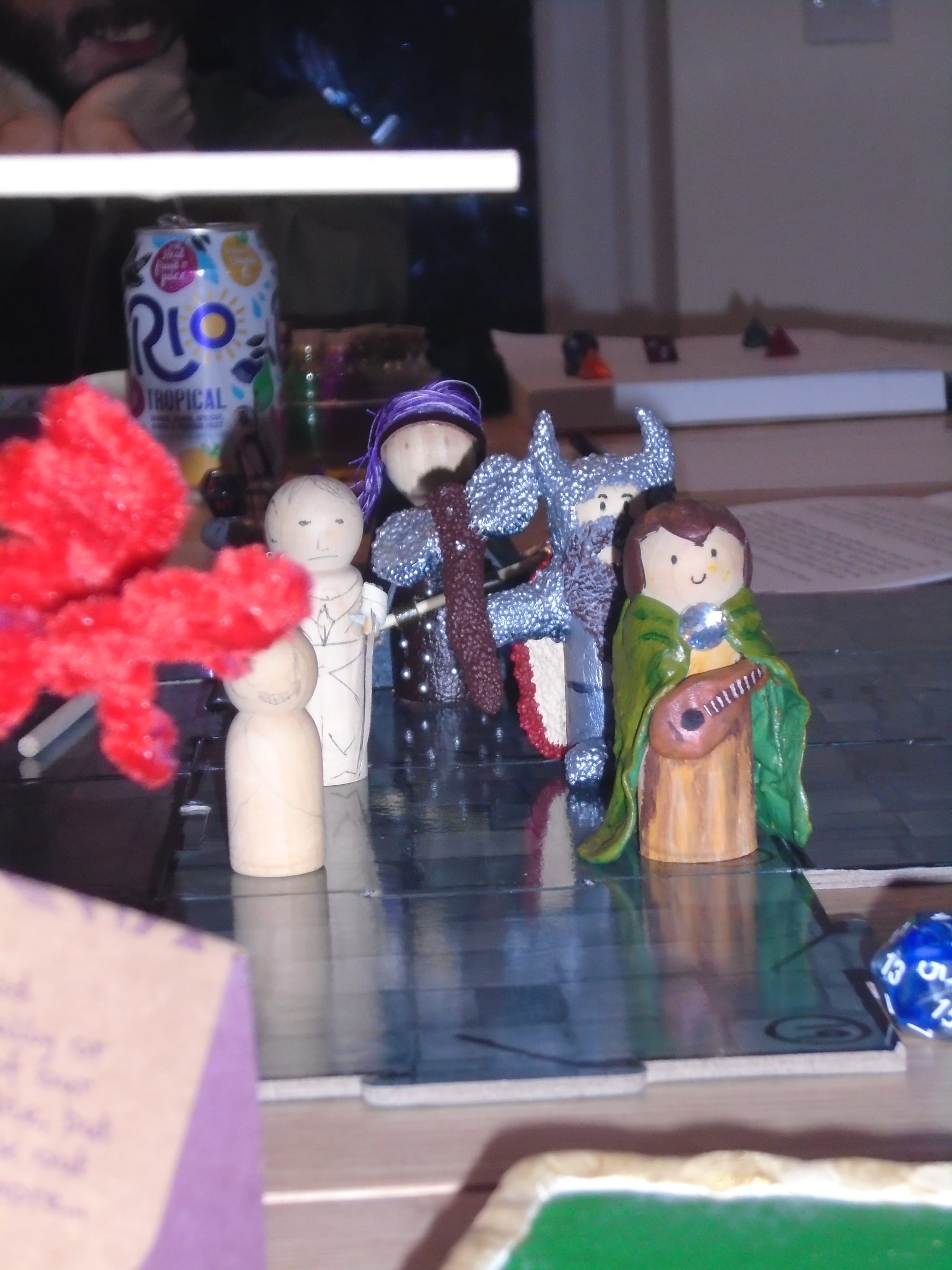
That red blurry thing in the foreground is the party's little dragon, and I wish I had a better photo because I was quite proud of that one. He was made from pipe cleaners, and was attached to a long stick so that he could "fly" above the rest of the party.
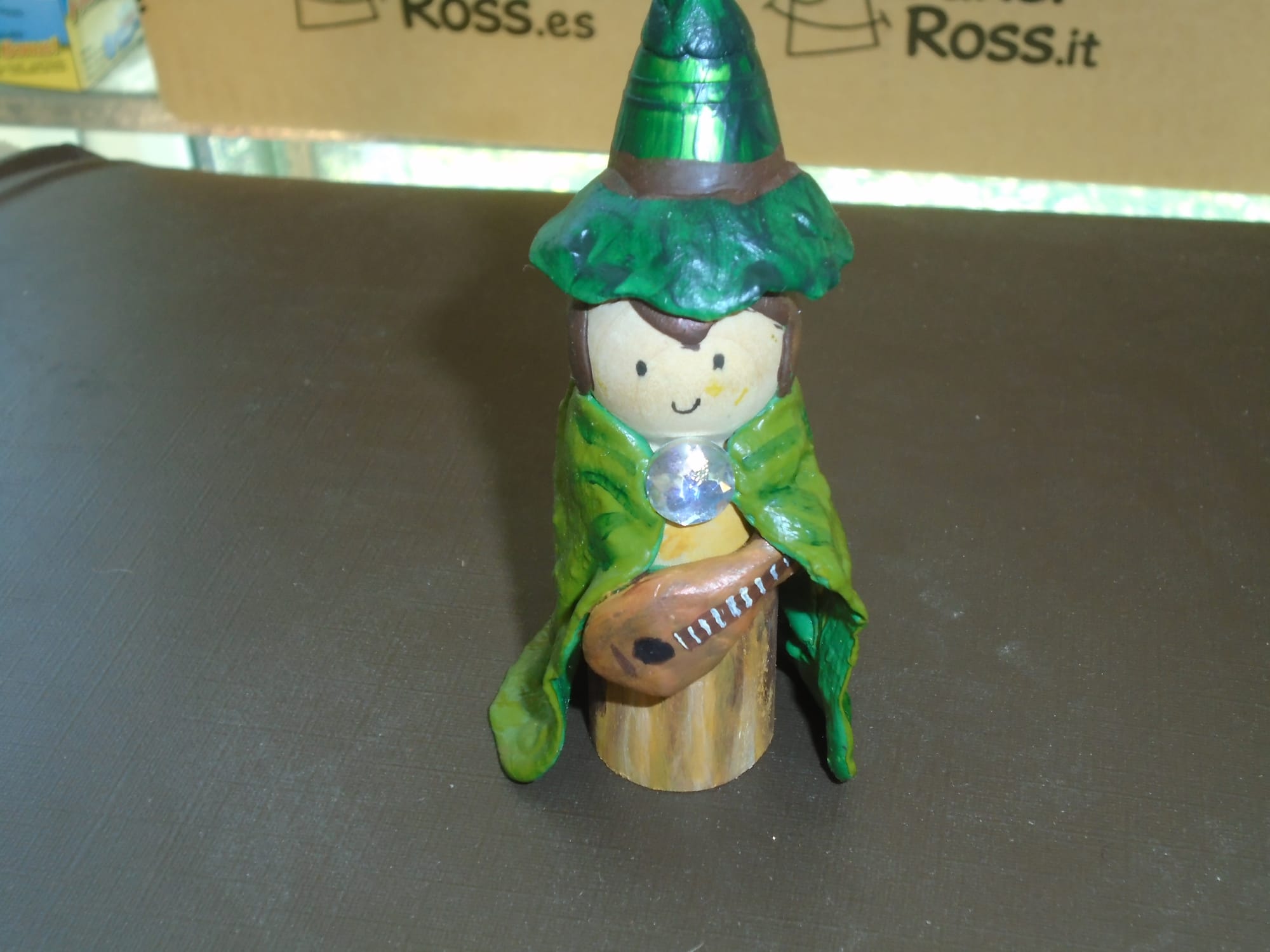
Lianthorn did not often wear his hat, in the end. It was a bit of a nuisance because it kept falling off. Obviously there were bits in the narrative where he had to sing, and while my voice is good, it doesn't really work for a talented male bard (even though I can easily get into the tenor range); so I used to play snippets of d'Artagnan singing lute songs. Fortunately he has recorded plenty.
I did buy some of the basic props as-is, including the surface that the characters are standing on in the group photo; these are Role 4 Initiative dry-wipe dungeon tiles, which are very versatile grey flagstones. If you look at the one in front of the group, you'll see it has a number in one corner for reference and a couple of doors drawn on it; which tile is laid down next depends on which door the group decides to go through. That way, they don't know where they're going till they get there. But it was usually much more fun to make things like this:
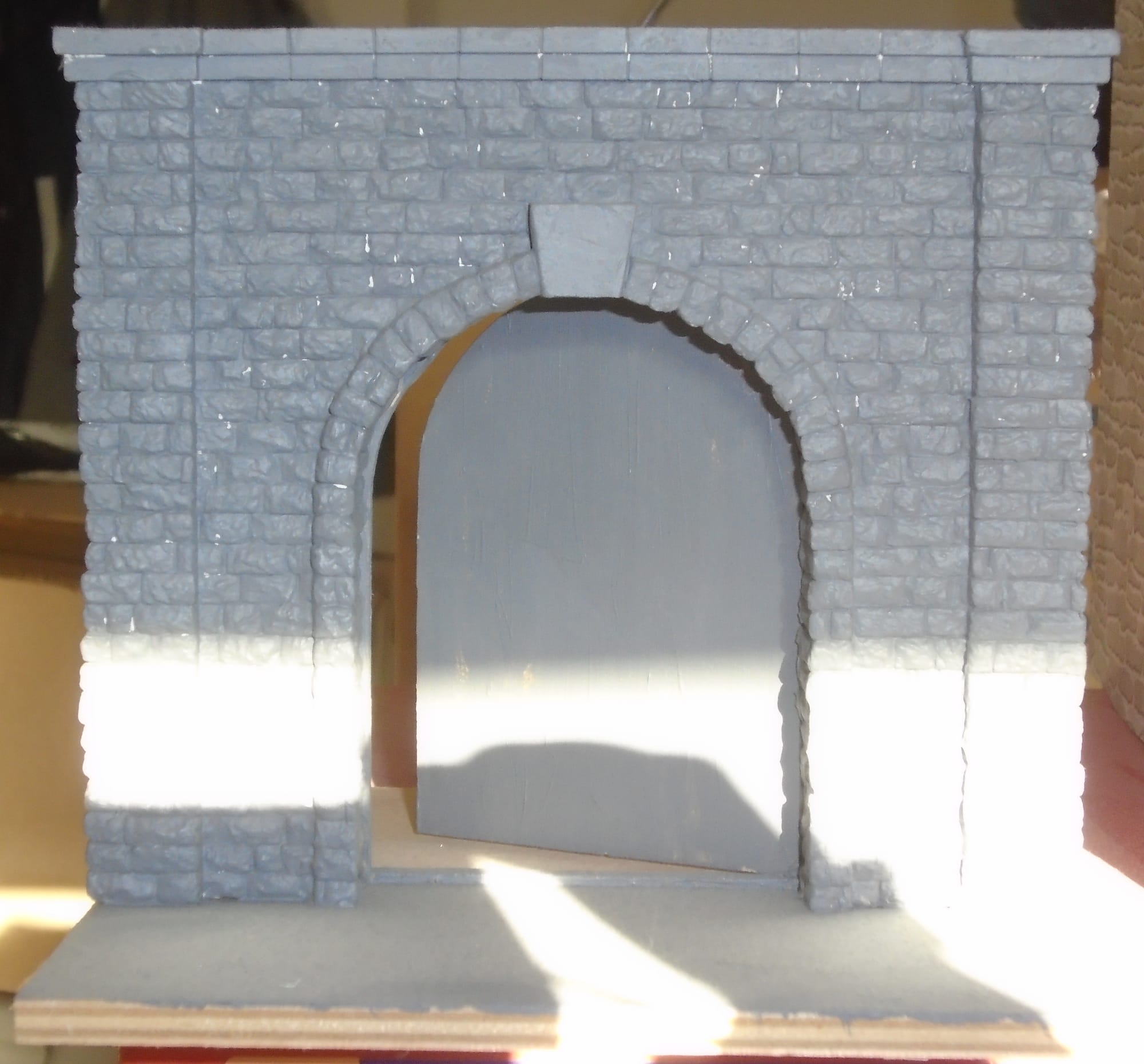
This was serendipity. The arched wooden doorway, which is hinged onto a plain wooden frame hidden behind the brickwork, came from Baker Ross; I think it was sold as a "fairy door" (not quite sure what that is, but the main thing was you could paint it). And the brickwork is a tunnel entrance sold for model railways... and they just happened to fit together perfectly. All I had to do was mount, glue, and paint, and I ended up with this marvellous thing that could be a city gate, a castle entrance, a tavern door (just hang the appropriate sign over it), or pretty much anything else you needed for your game scenario. Or, again, there was this:
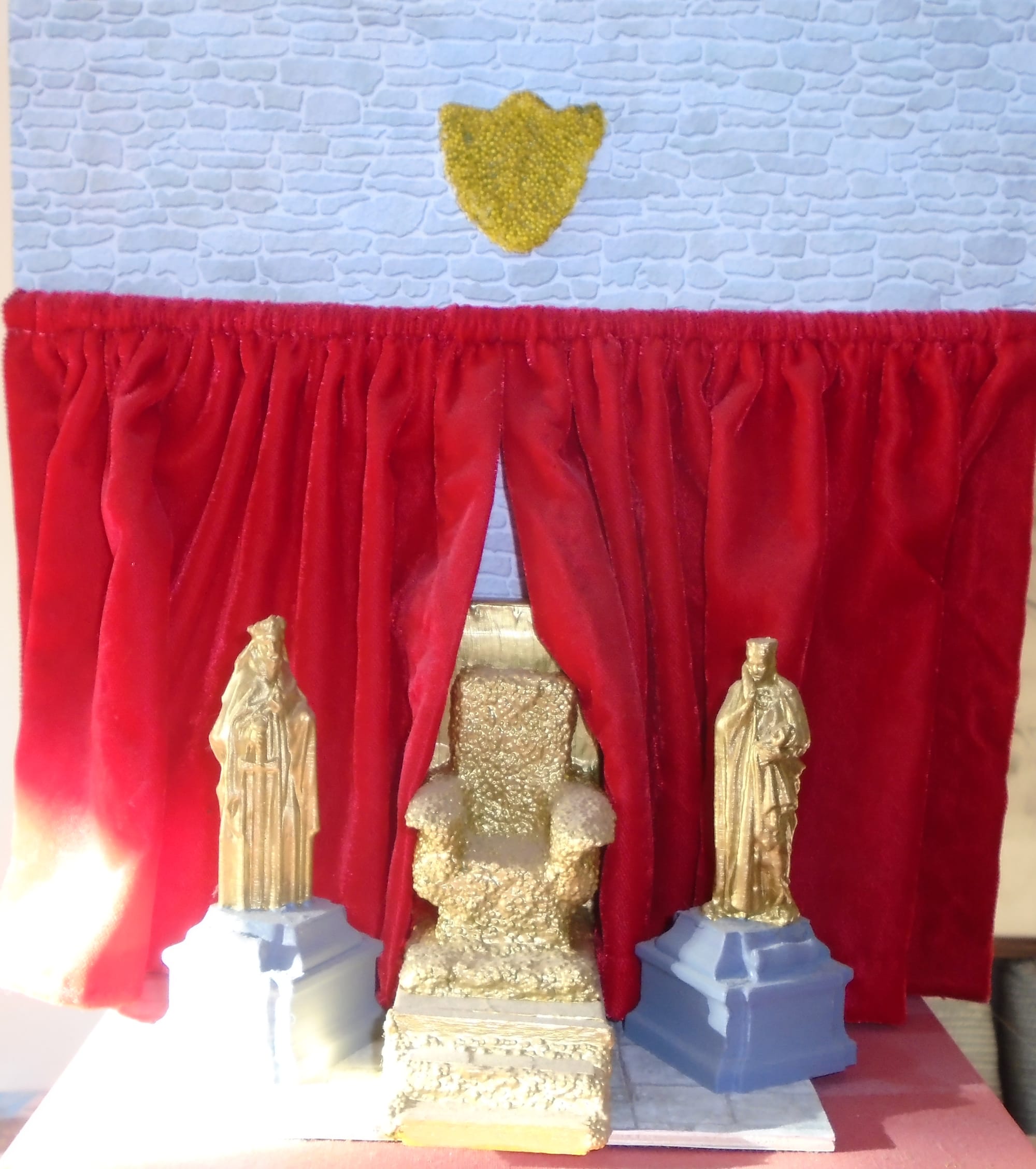
Both the campaigns I ran involved Prince Rhiander, the young and rather unpredictable heir to the throne. In the first campaign he ran away looking for adventure and his mother the Queen hired our party to find him; in the second, it turned out he had innate magical ability, so the Queen hired us again to escort him to an elven realm in the far north to stay with his aunt and be taught how to do magic properly so that he didn't break anything, including himself. So every now and then we had to go and see the Queen, and the Queen obviously needed a decent throne room. The throne itself is cobbled together from a matchbox and various little strips of wood, then covered with this wonderful goop you can buy from Baker Ross which is essentially really tiny polystyrene beads in a squishy glue that doesn't stick to your fingers, so you can mould it and it gives you the hammered effect you see here. (I also used it liberally for the dwarf figure, not because of the texture but because it's so light. An axe like that made of clay or even green putty would have been unstable.) I regret to say I did not make the statues of the first King and Queen; those were a pair of 3D prints I found on eBay, and when they arrived they were bright purple. I just painted them. Oh, and that stone wall at the back is hobby paper - same for the floor tiles. You can get quite a lot of different effects, and it's very useful.
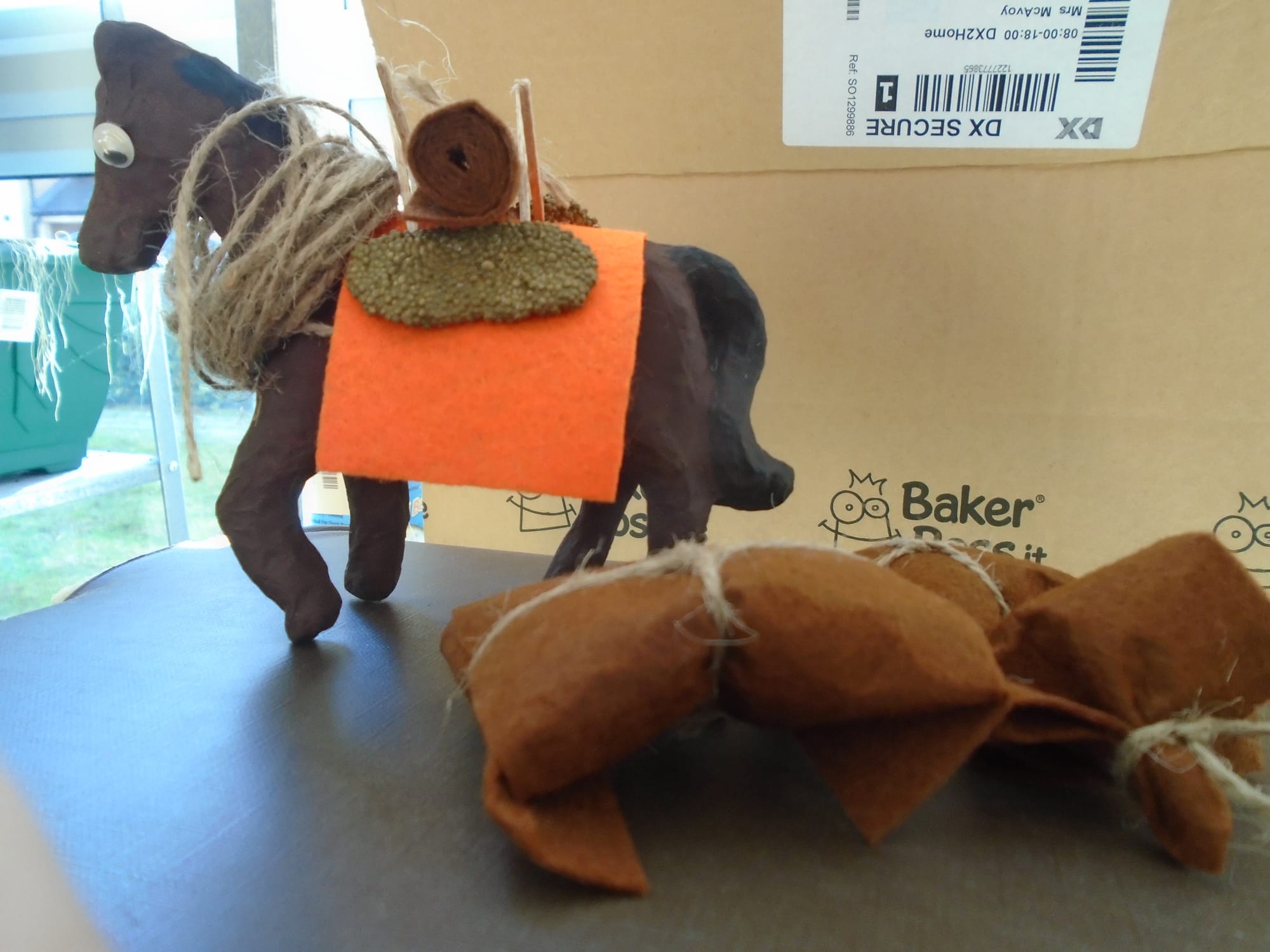
The horse came from Hobbycraft; I bought a few of them, since horses are pretty prevalent in most RPG campaigns (in fact, our paladin had his own). I could have gone to town a bit on the saddle blanket and added some nice embroidery, but I thought, maybe not for just a pack horse. Instead I made the arrangement on the horse's back; there is a roll of felt on it, which could represent a ground sheet, and the other packages in the foreground could be hung on the posts so that the horse could carry them, but I didn't do that so that you could see the carrying frame. I expect there's a technical name for it, but I don't know what it is. I based it on an actual illustration of a mediaeval pack horse.
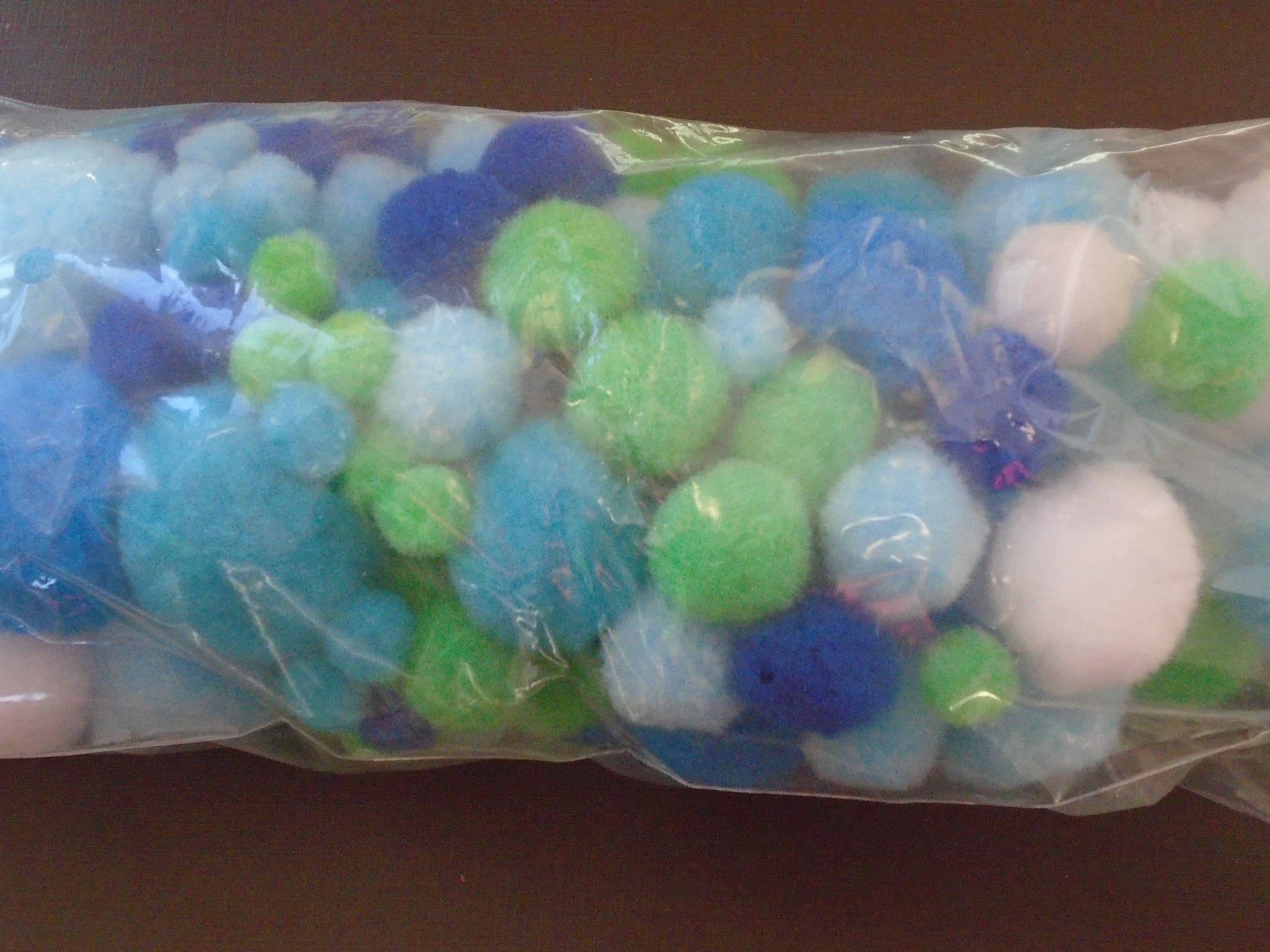
Well, in fact I used one of the larger ones for cleaning the dry-wipe tiles after the game session; but that's not what I bought them for. The thing is, I used to play a computer game called Moria (it's still a good game, but I haven't time these days). And Moria is highly addictive, but it's also resolutely old-school. Here's the screencap I took when I finally managed to win it:

See? Zero fancy graphics, so if you want to know what the monsters you're fighting look like, you need to use your imagination. (Well... usually fighting. If you run into an Ancient Multi-Hued Dragon, do not fight it. Back away very fast and hope it didn't notice you. Those things can kill you with one breath.) Moria is full of things that are trying to kill you; some of them are different types of human, some are quasi-natural (giant ants, centipedes, what have you), some are traditional monsters such as dragons or spectres, and not a few are cribbed from elsewhere, usually from D&D. So you have at least some idea what all those are going to look like. But there are one or two monsters that are unique to the game; and the first one you're likely to meet (since the monsters get more dangerous as you move down the levels) is the Blue Yeek. There are other Yeeks as well, but the Blue Yeek is the least dangerous; and of course I not only wondered what it looked like, but I had to bring it into our D&D campaign.
So I made not one Blue Yeek, but an entire family of them; and that was where those pompoms came in. I used those, pipe cleaners, and of course the wobbly eyes. The results were vaguely humanoid and ridiculously cute; so cute, in fact, that I haven't a photo because the lady who played our half-orc fighter wanted to adopt them after the game. Daddy Yeek was hanging around hoping to ambush one of our party, but he wasn't very good at it; so we caught him and talked to him, and he said he only wanted to feed his family, so we said, OK, then, maybe we can help each other. You be our guide and we'll kill some tasty monsters for you. And that was how it went.
There are some other things of which I wish I still had photos. There was Granny Vampire; she had a name, but that was what she ended up getting called. She was some long-deceased member of the royal family we found in the vaults. She'd been a vampire for a long time and finally decided that evil was no fun at all, so she'd concluded that she might not be able to help being a vampire, but she could at least forswear the whole evil bit. By the time we met her, she'd painted a tasteful floral design on her coffin, fitted it out with a proper set of bedding (matching sheets and pillowcase, of course, and a blanket that I knitted from a single strand of embroidery cotton using ballpoint sewing needles) and was wandering around in a rather fetching nightie giving all the spooks what for. I had the most fun with her hair; I used about half a dozen different shades of light grey stranded cotton for that, so it looked very natural. Oh, and there was the wagon. This was a gift from the Queen to help us take her son up north to his aunt's place; sadly that was balsa wood and it met with an accident (balsa wood is very fragile), but it was great. It had four little beds in it, divided from one another by toning curtains. Fat quarters are indeed wonderful things, especially when you get a pack of them that work together.
And finally... when I introduced Daddy Yeek (whose actual name I now forget), I needed a pair of eyes looking round a corner; the area was supposed to be badly lit, so the characters could just see the eyes and nothing else. So I took a pair of those wobbly eyes and glued them to the end of another long dowel rod like the one I used for the little dragon. And no sooner had I done that than the doorbell rang.
I couldn't find anywhere to put the dowel down without the eyes either sticking to the surface below or rotating and falling off; so I had to answer the door with a long dowel in my hand with a pair of wobbly eyes on one end. It turned out to be my home group leader, who neither batted an eyelid nor asked any questions.
He's used to me!
